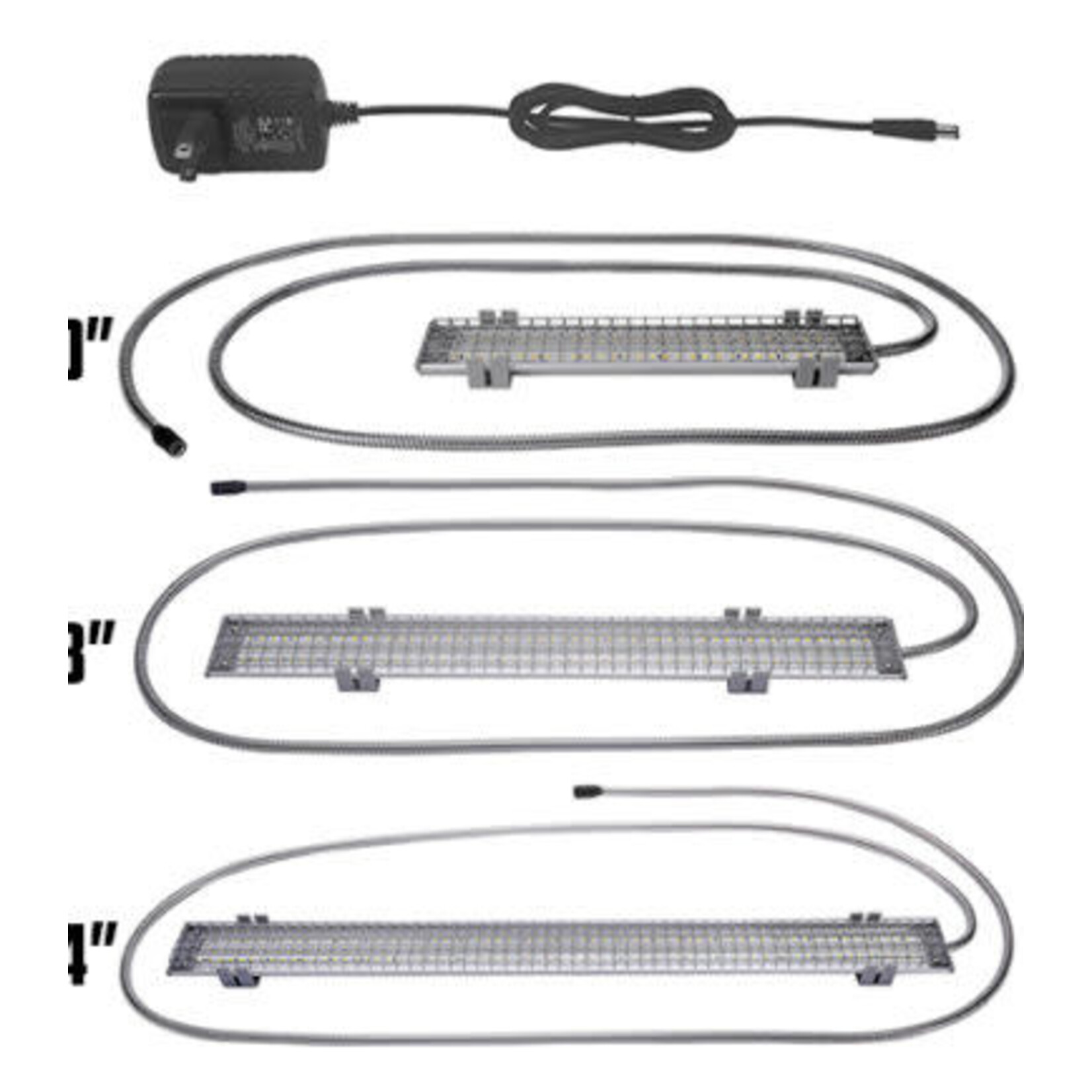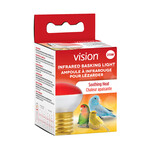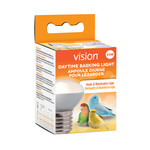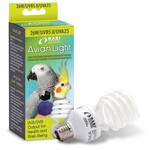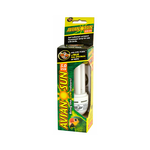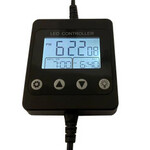– High-quality LED Lights with an abundance of wavelengths to keep your birds happy
and healthy.
– Designed for destructive chewers.
– Easy to install on any point of your cage.
– Coming in 3 sizes. 10″ – 18″ – 24″
– Color simulates a natural environment and enhance the color of your bird.
Designed for birds.
These lights provide safe, healthy light at any distance.
Crafted from years of experimentation with the latest LED technology,
the Chewguard Pet Light contains an abundance of the best wavelengths
for birds.
These lights are safe from any distance, easy to mount, affordable to operate,
and last a long time without any bulbs to change.
No other light on the market is as well-protected from destructive chewers.
Designed for hookbills, the LEDs are guarded by a chew-proof stainless steel grate
and the power cord is covered by a flexible stainless steel conduit.
The mounting brackets are steel and sturdy enough to resist the most powerful beaks.
Contained in an attractive aluminum housing, these sleek lights contain a proprietary
blend of diodes that look great on display in any room.
This light can be mounted on any point on your cage.
The lighting mounts directly to your cage, thus lighting only the cage, and won’t shine
in your eyes or reflect off your TV.
This LED lighting kit comes with everything you need to safely install and power up your lights.
| Supply Voltage — 12 VDC |
| Supply Current — 60mA |
| Power Usage — 7 WATTS |
| Brightness — 450 LUMENS |
| Color — PROPRIETARY |
| Color CRI — 94 |
| Dimmable — YES |
| Waterproof — SUITABLE FOR DAMP LOCATIONS (IP-20) |
Setting and Controlling Photoperiod
The major benefit of artificial lighting is that you can control how many hours of light your bird receives in a day, known as photoperiod. Many of a bird’s hormones are triggered by photoperiod, which in turn prompt certain behaviors such as nest-building and migration. Dr. Fern Van Sant, owner and primary veterinarian at the For the Birds clinic, explains the importance of photoperiod:
“If there is one single positive change that pet bird owners can make, it is returning the bird to a regularly recurring photoperiod. Whether in the wild or captivity, most birds demonstrate a remarkable periodicity to their days. Restoration of a regular recurring day and night cycle usually results in a happier and healthier companion bird. Birds have in their brains a finely tuned, light sensitive pineal gland. This gland is likely the mechanism by which birds set their circadian rhythm.”
Each bird species is different and benefits from its own particular photoperiod. A safe starting point is 10 hours on; however, the best course of action is to conduct online research or ask your avian vet about the best photoperiod for your bird.
The world around us is filled with electromagnetic waves (EM waves). In fact, there are hundreds, sometimes thousands, of EM waves moving through the room you’re in right now. Some of these waves are passing through you, while others are bouncing off of you.
The most important thing to know about EM waves is - as their wavelength changes, their effect on living organisms also changes.
For example, you can see in the image below that the longest waves are radio waves and quite harmless. As the wavelengths get shorter, they become harmful radiation.

A Look at EM Waves Produced by the Sun (Sunlight)
Most EM waves are man-made; however, this article is about how artificial light compares to sunlight, so we will discuss EM waves that the sun produces. These EM waves have a wavelength between 100 and 1,200 nanometers.
The longest wavelengths that the sun produces are Infrared waves, otherwise referred to as heat. The shortest wavelengths are UVC, which are 100% filtered out by the Earth’s atmosphere.
Ultraviolet waves between 280 and 400 nanometers are further broken down into categories A and B because the effects they have on living organisms are very different.
Wavelengths in the visible spectrum affect the color that we see
Within the visible spectrum, each wavelength is a different color. Light works by bouncing off of objects and into our eyes. When a light that contains wavelengths in the red spectrum bounces off of a red shirt, our eyes see red. If the light does not contain red wavelengths the shirt appears as a different color to our eye. That color depends on the wavelengths present in the light.
Therefore, a light with more wavelengths present is likely to make an object look more natural.
Mixing and Measuring Final Light
There are a limited number of colors in the visible light spectrum, but when they’re mixed, they produce different colors—much like mixing paint. Scientists estimate that the human eye can see over a million colors, which can be made by mixing various wavelengths of color. If a light were to contain an equal amount of every wavelength, the result would be white light. However, light rarely contains every wavelength, and it’s the mix of wavelengths present that determine the final color. Final color is measured by the Kelvin Scale (K).

When you purchase a light in the store, somewhere on the package will be the light color followed by the temperature in K. A regular household light, for example, is typically a yellowish light at about 3500K. The reason why light is measured in Kelvin rather than nanometers is because it represents the final color, not the individual wavelengths it contains.
The important thing to remember is that the K rating of a light is its final color and does not represent which wavelengths are present in the light to make the final color.
Optical Spectroscopes and Spectrographs
The color of light can be measured by an instrument called an optical spectroscope, which produces a report, called a spectrograph, as shown below. Sometimes a light will have a spectrograph on its packaging.


The written parameters of the report can be confusing, but if you look close you can see that this light is around 6,500K with a CRI of 94.
For the purpose of this article, the graph on the left contains more valuable information. It is a quick glimpse of which wavelengths (colors) are present in the light and at what intensity they are. As we learned above, in the graphic with the red shirt and blue shorts, the more wavelengths that are present, the more natural objects will appear to our eye.
For a fun reference, here is a spectrograph of the sun at noon on a cloudless day. The difference is pretty clear.
Summary of Important Facts About How Natural Light Works
- Different wavelengths in the visible spectrum cause us to see different colors..
- Lights with more wavelengths make objects and environments look more natural.
- The measurement of a light’s color (K) is the final result of the mix of the wavelength colors present in the light just like the final color of paint is a mixture of different colors.
- Wavelengths in the visible spectrum have no effect on the health of birds.
- Birds are not plants, their feathers do not act like leaves, therefore, natural light does not affect bird plumage other than how it appears to the human eye.
About the Author:
Mark Schack presents seminars on bird lighting at avian events around the country. Though without formal education in avian health, Mark is a mechanical engineer and lifetime hobbyist of breeding pet birds. Frustrated by the lack of availability of good lighting, he decided to build his own. The above information was gathered during Mark’s attempt to build “the perfect light” and through continued study of the subject.


